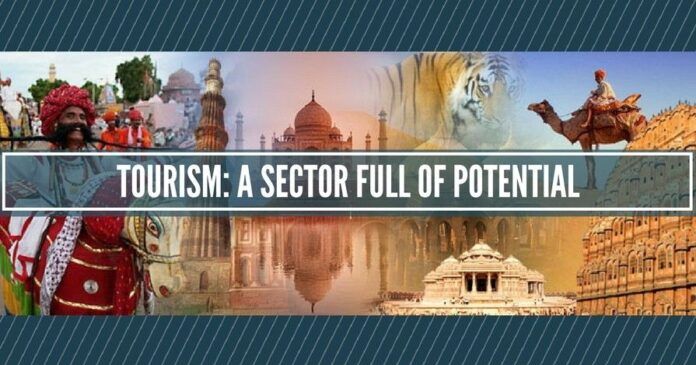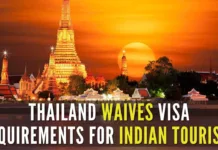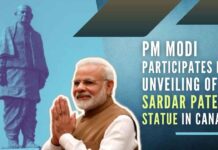
It is time the Prime Minister ensured that the administration under him shares his enthusiasm for tourism, for it can become the engine of job-creating growth.
The World Travel & Tourism Council (WTTC) has painted a rosy picture of tourism in India. Its 2018 economic impact report says that our country is expected to become the third largest travel and tourism economy by 2028 in terms of direct and total gross domestic product or GDP. While this sounds too good to be true, it certainly is within the realm of possibility.
The good signs first. Narendra Modi may be the first Prime Minister who has shown any interest in tourism. It was at his behest, when he was the chief minister of Gujarat, that Amitabh Bachchan became the state’s brand ambassador. In his Mann Ki Baat radio programme in last September, he said “It is a matter of concern when we do not see our own country, we do not know about its diversities nor do we understand them. Impressed by mere superficial glitter, we have started enjoying touring foreign countries.” He added, “I have no issues if you travel around the world but have a look at your own country too.”
In 2016, the total contributionof travel & tourism to employment was 9.3 percent of total employment (40,343,000 jobs).
More than his words, his attitude is a welcome change, for it tries to do away with the bias that tourism is about (mainly) well-off people having a nice time. Unfortunately, this essentially socialist bias is entrenched in the institutional mindset. Since socialism is focused on poverty—ostensibly its removal though its policies perpetuate penury—something as pleasurable as tourism has always been viewed with a mixture of suspicion and contempt.
This is the reason that no heavyweight politician after Karan Singh has presided over the Tourism Ministry since 1973. By the way, he was the first Tourism Minister, who took charge in 1967 and continued for six years. Currently, K.J. Alphons, a first-time minister, holds the office with the rank of Minister of State (Independent Charge). His immediate predecessor, Mahesh Sharma was also the first-time minister, also MoS (IC). Unsurprisingly, the sector’s issues mostly remain unresolved.
Evidently, while the Prime Minister himself is convinced about the beneficent aspects of tourism, the system is yet to gear itself to boost the sector. Despite the well-known and multifarious advantages travel & tourism hold.
Consider the numbers: The direct contribution of travel & tourism to GDP was Rs 480,980 crore ($71.7 billion), or 3.3 percent of total GDP in 2016. The WTTC forecasts it to rise by 6.9 percent in 2017, and to rise by 6.8 percent per annum during 2017-27, growing to Rs 994,850 crore ($148.2 bn), or 3.5 percent of total GDP in 2027. The total—that is, direct and indirect—contribution of travel & tourism to GDP was Rs 1,401,850 crore ($208.9 bn), 9.6 percent of GDP in 2016, and is forecast to rise by 6.7 percent in 2017, and to rise by 6.7 percent per annum during 2017-27 to Rs 2,849,180 crore ($424.5 bn), or 10 percent of GDP in 2027.
The biggest problem the sector faces today is that, the system remains apathetic to the concerns of the industry.
On the jobs front too, the sector plays a big role and can do even better. According to the WTTC, in 2016, the total contribution—direct as well indirect—of travel & tourism to employment was 9.3 percent of total employment (40,343,000 jobs). This is expected to rise by 1.8 percent in 2017 to 41,074,000 jobs and to 49,868,000 jobs in 2027 (9.6 percent of total).
So far, so good. But the biggest problem the sector faces today is that, despite the best intentions of the Prime Minister, the system remains apathetic to the concerns of the industry. For instance, the hospitality sector pleaded earnestly with the Finance Ministry to slash the 18 percent goods and services tax (GST) rate on hotel rooms with the tariff in the range of Rs 2,500-Rs 7,500 a night. This, they rightly argued, would boost domestic and inbound tourism. The high rate is hurting the sector vis-à-vis competing destinations.
Finance Minister Arun Jaitley, however, chose to ignore the genuine demand.
Then there are also issues related to moral policing. Many states have prohibition, a big drag on tourism. The Prime Minister’s own state, Gujarat, is one of them. Madhya Pradesh, another state under the Bharatiya Janata Party, may also go dry.
Poor infrastructure and bad sanitation are other big turnoffs. There are many other major and minor problems plaguing travel & tourism. It is time the Prime Minister ensured that the administration under him shares his enthusiasm for tourism, for it can become the engine of job-creating growth.
Note:
1. The views expressed here are those of the author and do not necessarily represent or reflect the views of PGurus.
- Liberty Is Penalized, Violence Goes Untouched - December 21, 2019
- Rahul’s Howdy bloomer - September 22, 2019
- Chidambaram’s hypocrisy - August 22, 2019











Very positive article with realistic projections. No country in the world has as many heritage sites as in India. While medical tourism has created a space, heritage and temple tourism are beyond the reach of foreign tourists except Agra, Rajasthan belt. Growth potential in this industry is huge, but the main hurdles are availability of hygenic food and accomodation. On the positive side, road connectivity has vastly improved with little or no power cuts. Tourism policy of state and central govnts are rosy but many are non implementable with confused conditions. EX, Hyped caravan tourism and putting up 3 star hotels are non viable. If corporates encourage youngsters, this industry is going to boom with huge foreign exchange earnings next only to remitences from overseas indian citizens.
In addition to the importance that needs to be given to tourism sector by the Central and State Governments, a vital component for growth of this sector is the demeanor of the service providers and general public at and near tourist attractions. These aspects have to be addressed by the local social leaders, and Government officials.